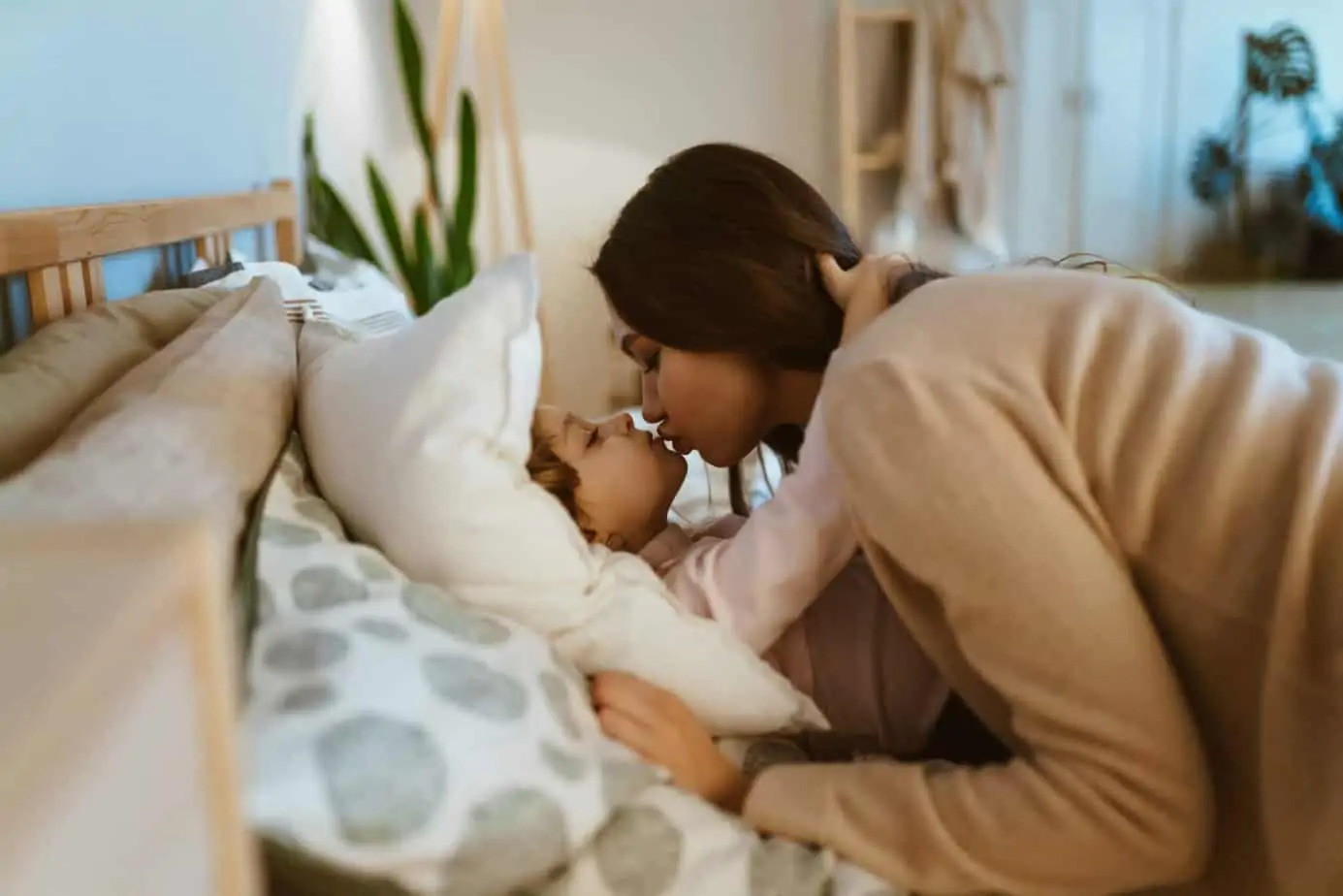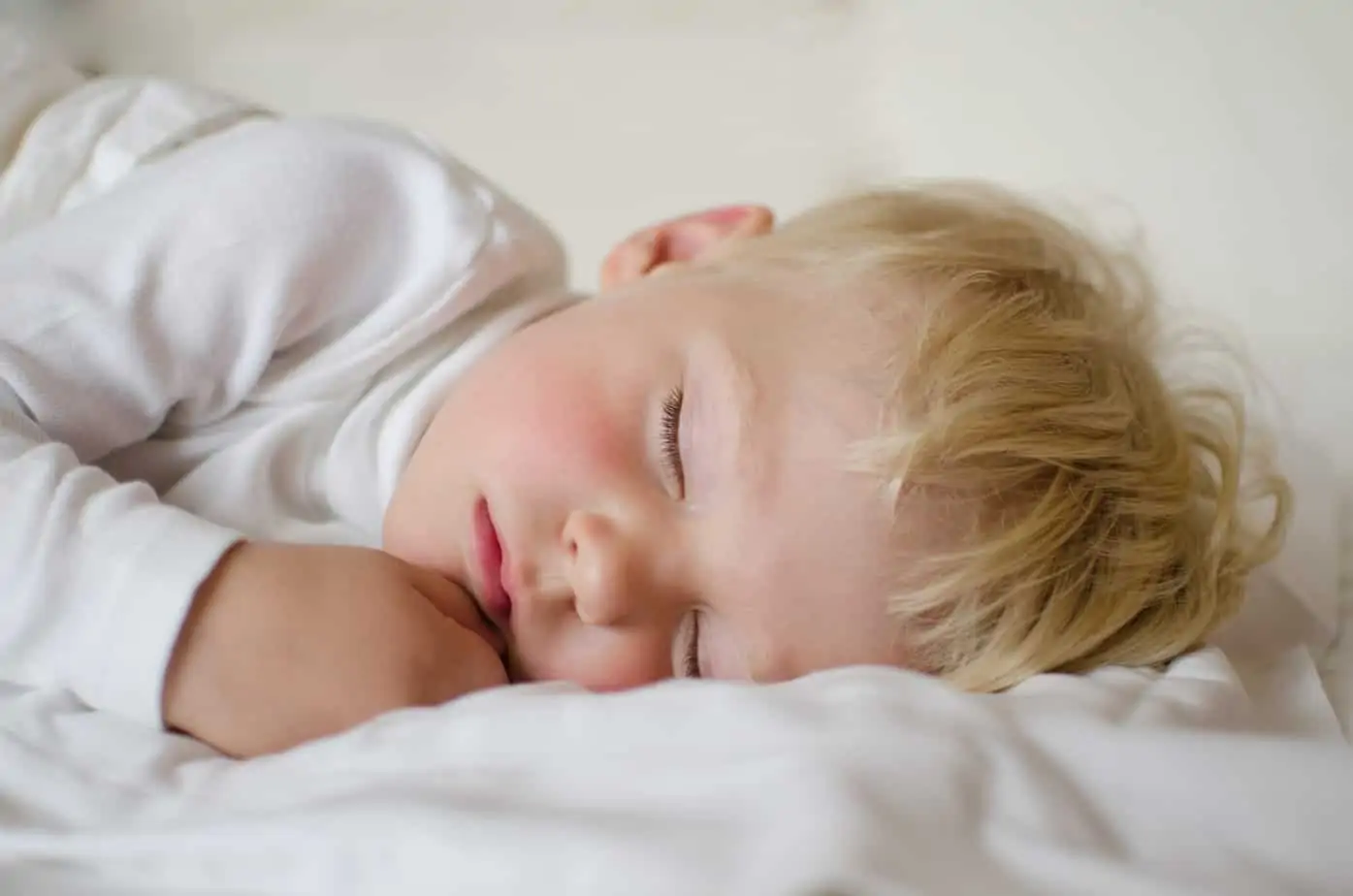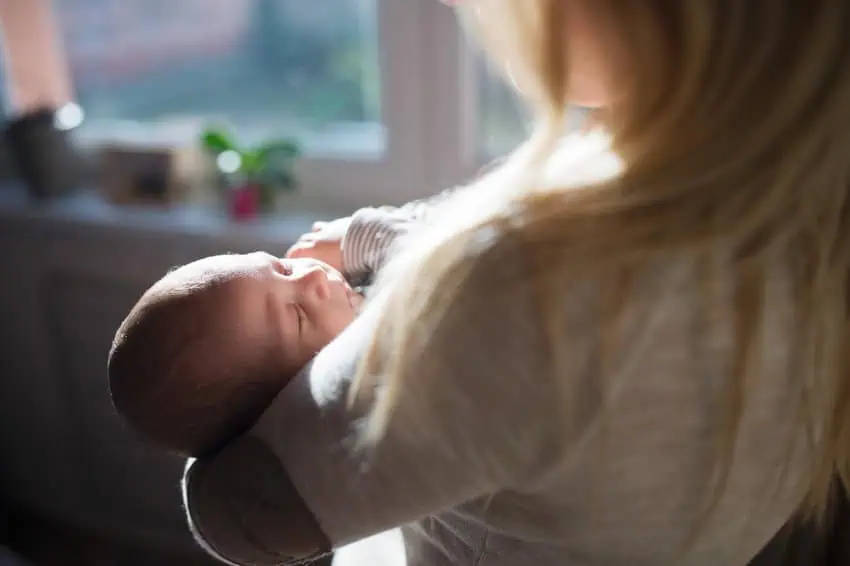When we lived in our old house, the walls were paper thin and our third baby was struggling to sleep because of the noise that would interrupt her naps and bedtime.
It made evenings hard when the older kids went to bed after her but still had more than enough energy to bounce off the walls. When she was six months old, they stopped napping altogether and inevitably, their raucous play would sometimes wake her before nap times were done.
I saw we needed to make some changes to her nursery and our routines so she didn’t turn into a light sleeper, or worse, form bad sleeping habits.
Knowing how essential quality sleep is to a baby’s growing body and brain, I pulled out all the stops and my sleep tricks to ensure her room, and our home was set up for optimal sleep.
What worked for our family was switching the big kid’s room with the nursery so the baby would now be in the quietest and furthest room from the living room and playroom, added black out curtains, a sound machine and an improved bedtime routine that had her falling asleep and staying asleep longer.
WHITE NOISE IS A LIFE SAVER
White noise helps to mask household noises that might wake up or disturb your baby – such as spirited big brothers and sisters or a barking dog.
We use a white noise machine that has traditional white noise, but also the sounds of the ocean, rain, a running stream and radio. In fact, each of my kids has their own in their room.
When babies are in the womb, they hear constant whooshing and white noise so having this background noise can greatly improve sleep because of its familiarity and calming effects.
MASTER THE SWADDLE
There is nothing like the moment you put your baby down to sleep and quietly creep out the bedroom, to only have them wake suddenly because their flinging arms and legs have startled them.
We loved The Love the Dream Swaddle where the arms aren’t as snug and allow a little more movement. When they outgrow the swaddle, you can also unzip the arms and you have a sleep sack.
Sudden sounds can startle babies, making them fling their arms and legs and unhappily wake up. When you gently swaddle a baby, it helps to make them feel secure with the snug wrap gently tucking their arms into their body.
BLOCK OUT THE LIGHT FOR BETTER SLEEP
Babies fall asleep and stay asleep longer in dark rooms – something they were accustomed to when they were in the womb.
Cover windows in black out curtains and shades to make the room as dark as possible during naptimes and bedtimes. When they are not sleeping, keep windows open and let the light in so their bodies understand the difference between daytime and nighttime and playtime and sleep time.
Use nightlights, a flashlight or even the flashlight on your phone during feedings. Video monitors have a nighttime feature so you will still be able to check on your baby in the dark and see if they’re sleeping soundly or moving around in their crib.
DON’T WAKE THEM UP BY CHECKING IN TOO FREQUENTLY
Don’t take the chance of waking your baby by checking on them frequently, especially if they’re a light sleeper.
Invest in a decent video monitor to check on your baby to see if they’re sleeping, trying to put themselves back to sleep or do need you. We love our Summer Infant Monitor and the fact that it’s safe and the WiFi can’t be broken into
The Angel Care Movement Monitor & Mat can be placed under the crib mattress and monitors sleep and breathing, helping new parents especially, to rest easier and monitor from afar.
REPOSITION THE CRIB OR SWITCH ROOMS
Find the quietest spot in the room and move the baby’s crib furthest away from the where the noise enters the room. This may be the door or window or an wall that doesn’t block noise especially well.
If this means switching rooms in your house, this may also be a good solution. (We had to do this and it worked out much better for everyone!)
SPEND TIME IN THE DAYLIGHT TO HELP NIGHTTIME SLEEP
Babies who are exposed to daylight – actual, real sunshine, blue sky and fresh air – during the daytime and particularly in the afternoon, sleep better at night. This is a proven, scientific fact.
Take an afternoon stroll, play outside or just cuddle on a blanket outdoors – whatever weather may permit this time of year.
Daylight helps babies understand the different between daytime and nighttime, naturally adjusts their sleep schedules and is proven to help your light sleeper get a better, and more importantly, deeper night’s sleep.
CREATE A PEACEFUL BEDTIME ROUTINE
Babies need a little help learning to fall asleep and stay asleep on their own, which is why having a peaceful and calm bedtime routine that you consistently follow every night is important. This routine is an indicator that bedtime is near and helps them understand the steps to falling asleep on their own.
Learn how to create a peaceful bedtime routine and what one may look like so you can begin the steps to helping your baby fall asleep – and stay asleep!
Resources for Handling Routines & Sleep


You Might Like..
- Shop The Pragmatic Parent Store for Positive Parenting Tools
- Is Your Kid Waking Too Early? Why this Happens & How to Fix It!
- 10 Helpful Ways to Calm the Kid Who Fights Bedtime
- Toddler Sleep Regressions: What You Need to Know About Your Two Year Old’s Sleep
- Create a Peaceful Bedtime Routine for Better & Longer Sleep
- Create A Great Routine For Your Toddler
- Comprehensive Sleep Charts: Baby – Adolescents
Want even more?
Shop All Parenting Resources
Shop all of our parenting resources from self-regulation tools and managing big emotions to building self esteem and confidence. There are resources for all seasons of life!








